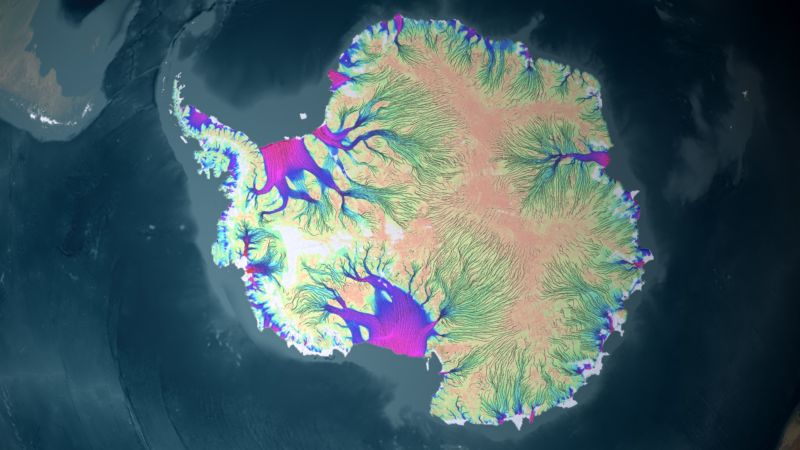
Glaciers are moody things with a myriad of personalities. Some are pretty stubborn, refusing to melt too much as Earth’s climate warms. But others are quite sensitive, with the potential to shrink more than you might expect if you push them too far.
Much of this has to do with the shape of the bedrock beneath. Some glaciers that touch the ocean have bedrock bases that slope downward as you head inland. If the glacier starts retreating downhill, seawater can flow in and float the ice more and more easily, destabilizing it so it retreats faster.
Each marine glacier has a “grounding line”—the point where ice stops resting on solid ground and starts floating, instead, like a canoe shoving off from shore. When you hear about an “ice shelf,” that’s the floating portion of the glacier. The position of the grounding line along the bedrock is where topography plays such a big role. But a new study from a team led by NASA’s Eric Larour shows how the bedrock can move, too, making these sensitive glaciers a little less sensitive.
The idea isn’t new. The retreat of these glaciers can be accelerated or slowed by a number of processes, including changing sea level out front. As sea level rises, the floating effect obviously increases, accelerating ice loss. And there are weirder factors: glaciers actually exert a gravitational attraction on the seawater around them, pulling a mound of water in close. If the glacier shrinks, that gravitational pull also shrinks, which actually lets water slosh away—lowering sea level at the coast.
Bedrock also responds to changes in the mass of ice on top. Increasing ice acts to slowly depress the land surface (which is why the land beneath Greenland’s ice sheet is roughly bowl-shaped). Losing ice allows the bedrock to rebound upwards. And in this case, that means that the bedrock at the grounding line beneath a sensitive glacier can spring upwards to meet the ice, helping to maintain the friction that slows retreat.
The question is, how much of an effect does this have? Many models that are used to simulate changing glaciers try to include these processes but are limited to coarser resolutions. In this new study, the researchers modeled Antarctica down to a resolution of 1 kilometer. It turns out that makes a pretty big difference.
The study is focused on Antarctica’s Thwaites Glacier, which is among the continent’s most sensitive and vulnerable—and therefore a major wildcard when it comes to how quickly future sea level rise will accumulate. Several versions of the model were run to simulate the next 500 years, each time adding another process to see what impact it had.
The two largest effects were rebounding bedrock followed by the gravitational attraction, both of which slowed Thwaites Glacier’s shrinkage. The higher model resolution showed that these processes were stronger in the immediate vicinity of the glacier than you would see in coarser models that average over larger areas. Together, they reduced the movement of the glacier’s grounding line by almost 40 percent in the year 2350, reducing its contribution to sea level rise by 25 percent.
While that result indicates that these processes could be important and helpful in the long run for glaciers like Thwaites, there was unfortunately very little difference this century. Around 2100, there was only a 1% change in sea level rise contribution. Larger changes in mass were required before rebounding bedrock or weaker gravitational attraction could become significant factors.
One of the more sobering facts about sea level rise is that it will continue long into the future, even if we successfully halt global warming. Ice sheets simply take a long time to fully respond to a warmer world. This study shows that complex factors like moving bedrock may not have a big impact on sensitive glaciers over the coming decades, but they have to be properly accounted for if you want to project those changes out a few centuries—where they can provide some rare good news.
Science, 2019. DOI: 10.1126/science.aav7908 (About DOIs).
https://arstechnica.com/?p=1496829

